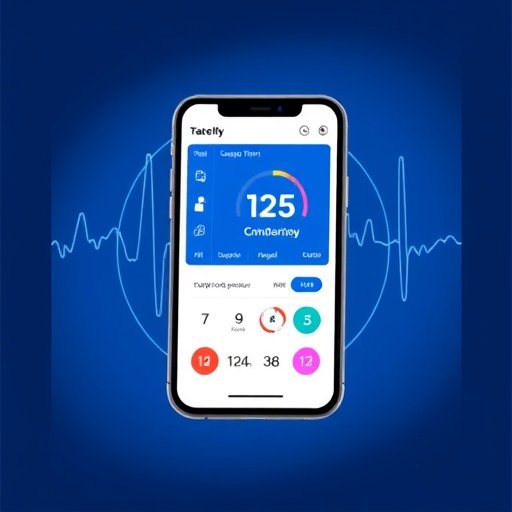A groundbreaking advancement in hypertension management has emerged through the development of a novel Blood Pressure Treatment Efficacy Calculator, a first-of-its-kind online tool that leverages data from nearly 500 randomized clinical trials encompassing over 100,000 participants. This innovative calculator allows clinicians to estimate precisely how much various antihypertensive medications can reduce systolic blood pressure, thereby enabling a more tailored and effective treatment strategy for individuals battling high blood pressure.
Published in the prestigious journal The Lancet, this research marks a significant paradigm shift in the approach to hypertension treatment. Traditionally, doctors have relied on repeated blood pressure measurements in individual patients to titrate medication doses, a method fraught with inherent variability and measurement noise. These fluctuations often obscure true treatment effects, leading to potential misjudgments about a therapy’s efficacy. The new calculator circumvents this barrier by synthesizing robust evidence from an extensive body of clinical trial data, thereby providing an objective average treatment effect for each drug or drug combination.
Hypertension is a pervasive global health issue, affecting an estimated 1.3 billion people worldwide and serving as a leading cause of cardiovascular morbidity and mortality. Despite available therapies, fewer than 20% of individuals with high blood pressure have their condition sufficiently controlled. This dismal statistic underscores the urgent need for more precise and effective treatment tools. The calculator’s ability to stratify drugs into low, moderate, and high-intensity categories based on their average blood pressure-lowering potency offers clinicians a data-driven framework previously unavailable.
Systolic blood pressure reduction is of paramount importance in decreasing the risk of heart attacks, strokes, and kidney failure. Studies have shown that even minimal reductions, such as 1 mmHg, correlate with a 2% decrease in cardiovascular events. Against this backdrop, the calculator empowers physicians to specify treatment goals in terms of millimeters of mercury and select drug regimens that align exactly with the magnitude of BP reduction needed, rather than relying on trial-and-error adjustments guided by variable blood pressure readings.
The complexity of antihypertensive treatment arises not only from the large number of available medications—each with distinct mechanisms and dose-dependent efficacies—but also from the frequent necessity of combination therapy. Patients often require two or more drugs to achieve optimal blood pressure control, which exponentially increases the potential combinations and dosing permutations. The calculator integrates these multiple variables by analyzing randomized controlled trial outcomes encompassing monotherapies and numerous drug combinations, yielding an unprecedented comprehensive efficacy profile.
One of the challenges with conventional BP monitoring is the high inherent variability. Blood pressure fluctuates continuously due to a variety of physiological and environmental factors, including circadian rhythms, stress, physical activity, and even seasonal changes. These fluctuations can rival or surpass the actual changes induced by medication, making single or sporadic readings unreliable. In addition, variations in measurement techniques and equipment can introduce further inaccuracies, compounding the difficulty of assessing drug effects solely based on patient BP measurements.
By aggregating data from rigorous double-blind, placebo-controlled clinical trials, the calculator establishes treatment effect estimates with greater precision. Each drug and dose combination is evaluated through computational modeling approaches, generating a high-resolution picture of expected blood pressure reductions. This method allows healthcare providers to bypass some of the uncertainty and delay associated with the conventional “start low, go slow” titration strategy, which often prolongs the time before patients reach their target blood pressure.
Senior researchers emphasize that this approach could reduce clinical inertia, which occurs when treatment adjustments are deferred due to uncertain BP readings or concerns about patient tolerance and adherence. Instead, treatment plans can be individualized upfront based on quantified expected benefits. This proactive strategy holds promise for accelerating hypertension control, potentially reducing the incidence of debilitating cardiovascular events on a large scale.
The research team is now working toward validating this novel strategy in prospective clinical trials, where patients will be treated using protocols guided by the calculator’s recommendations. Such trials will assess whether this data-driven method indeed translates into improved clinical outcomes compared to standard care. If successful, it could trigger a shift toward precision medicine in hypertension, integrating large-scale evidence synthesis with individualized treatment planning.
High blood pressure remains a silent threat, frequently asymptomatic until catastrophic events occur. Its global burden demands innovative solutions that can be implemented at scale. Even modest increases in the proportion of patients achieving BP control could translate into millions of lives saved, alleviating the strain on healthcare systems worldwide. By harnessing the power of big data and computational analytics, this new calculator stands poised to revolutionize hypertension treatment paradigms.
Access to the calculator is free and available online, providing an accessible tool for clinicians globally to refine their treatment decisions based on solid, up-to-date evidence. This initiative exemplifies how computational modeling and extensive data integration can generate actionable insights that directly improve patient care. The convergence of data science and clinical medicine in this context is a promising harbinger of future advances in chronic disease management.
Ultimately, this innovation exemplifies the potential of personalized medicine, where treatments are no longer applied through generalized protocols but are fine-tuned to the unique physiological and clinical needs of each patient. As researchers continue to explore pharmacological combinations and their efficacies, tools like this calculator can help translate complex data into practical, life-saving interventions.
Subject of Research: People
Article Title: Blood pressure-lowering efficacy of antihypertensive drugs and their combinations: a systematic review and metaanalysis of randomised, double-blind, placebo-controlled trials
News Publication Date: 28-Aug-2025
Web References: https://www.bpmodel.org/
References:
- Wang N, et al. Blood pressure-lowering efficacy of antihypertensive drugs and their combinations: a systematic review and meta-analysis of randomised, double-blind, placebo-controlled trials. Lancet 2025; 406: 915–25
- Global report on hypertension: the race against a silent killer. Geneva: World Health Organization; 2023. Licence: CC BY-NC-SA 3.0 IGO
- World Heart Federation. Hypertension.
Keywords: Hypertension, Antihypertensive activity, Cardiovascular disease, Personalized medicine, Health care delivery




